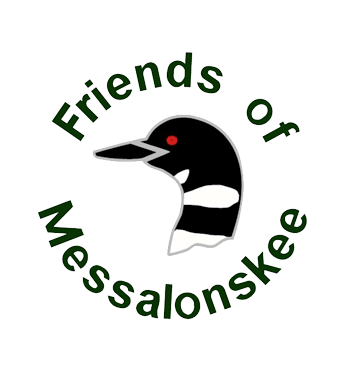History & Facts
Friends of Messalonskee:
The first Lake Association was formed in 1980 and was known as the Snow Pond/Messalonskee Lake Association. In 1990, the association was renamed the “Messalonskee Lake Association”. Now known as Friends of Messalonskee Watershed, this association has always worked to promote education and responsible use of the lake. Since its inception, the challenges to Messalonskee Lake have increased. The introduction of variable leaf milfoil (“VLM”) in the early 1990s had a significant impact on our mission as an organization as has increased development on the lake and in the Watershed that has increased the flow of sediment into the lake. FOM supports several programs to address these issues.
Membership has grown significantly since the founding of the original group. Today, members come from all over the Watershed and are true friends of the lake. Thank you to all our friends for making this possible!

Lake History:
The town of Belgrade, the first town in the area, dates back to 1774. In that year, Philip Snow, a hunter who had spent some time in the area now known as Sidney, decided to search for new hunting grounds across the large lake on the west side. Snow crossed the lake and made a landing about two miles north of what is today Belgrade Depot. He built a log cabin, which he probably intended to use as a base for hunting because he came alone, with no family. About six years later, Snow sold his log cabin to a man named Joseph Greely, who returned to the family home in Sidney. At some later date, before Belgrade was even a town, Snow returned to the western side of the lake, along with his wife, and nine children, and later left the country.
Waterbody statistics

Description of Waterbody Uses and Value
Due to the lake’s close proximity to the cities of Augusta and Waterville, the lake and its surrounding watershed are used extensively for swimming, fishing, and boating as well as bird watching and hiking in the summer, and ice fishing, skiing, and snowmobiling in the winter. The lake contains five islands (Walters, Snake, Blake, Midway, and Greely) and can be accessed via three state-owned boat launches on the lake and a fourth on Belgrade Stream in Mt. Vernon. Messalonskee Lake is well known for the Maine Pond Hockey Classic- an annual event that draws hundreds of people to the lake to skate each February. Commercial businesses in the watershed benefit from its draw as a regional recreational destination, and towns in the watershed benefit the tax base resulting from shoreline development.
There are over 800 acres of conserved lands in the watershed, including two Wildlife Management Areas (WMA), the four state boat launches, municipal lands, and parcels and preserves managed by 7 Lakes Alliance. Large undeveloped habitat blocks cover 17,778 acres, or 63% of the watershed. These large undeveloped areas benefit wildlife by providing extensive habitat areas and help protect water quality by reducing impervious surfaces and bare soil in the watershed.


The Messalonskee Lake watershed contains a wealth of water resources including 3,730 acres of lakes and ponds, 79 miles of perennial and intermittent streams, 3,796 acres of freshwater wetlands, and 4,497 acres of riparian habitat. The largest wetland in the watershed,Messalonskee Lake Marsh, surrounds the outlet of Belgrade stream at the south end of the lake and includes nearly 1,300 acres of significant inland waterfowl and wading bird habitat (IWWH). The lake and its associated wetlands provide scenic benefits for recreational users, and habitat for a number of endangered, threatened, or bird species of special concern. The marsh is the largest nesting site in Maine for the black tern (Chlidonias niger) and hosts other rare and uncommon species including the least bittern (Ixobrychus exilis), American coot (Fulica americana), and the scarlet bluet (Enallagma pictum). In 2021, 40 adult loons (Gavia immer) and 4 chicks were documented on the lake setting the record for the greatest number of adult loons counted in any year since 1983.
Messalonskee Lake’s cool, deep water has historically supported a healthy and diverse coldwater fishery. Maine Department of Inland Fisheries and Wildlife reports 21 species of fish in Messalonskee Lake including coldwater fish. A decline in available oxygen in the deep water areas of the lake and an increase in predatory fish including northern pike (Esox lucius), white perch (Morne americana), and chain pickerel (Esox niger), which are not all native to Messalonskee Lake, along with a lack of a good forage base for salmon, has resulted in a decline in the salmon fishery over several decades. The healthy bass population has increased public interest in fishing tournaments including an Elite Kayak Fishing Tournament as well as locally organized fishing derbys.

